Destinations & Things To Do
Top Budget-Friendly Family Holiday Destinations for 2025 Revealed
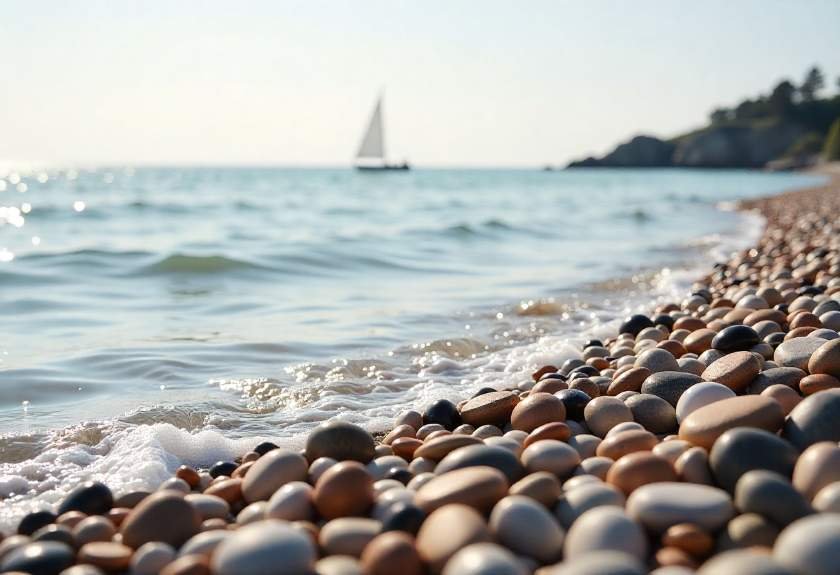
Monday, July 21, 2025
The eastern resort of Marmaris on Turkey’s stunning Aegean coast is the best value spot for a family holiday in 2025 – even though prices there are on the rise compared to last year. A recent study by Post Office Travel Money showed that a family’s holiday must-haves – such as meals, snacks, drinks and suncream – come to around £128.99 in Marmaris, more than 10 per cent more than last year.
Close behind Marmaris, Bulgaria’s Sunny Beach is a solid second best-value family holiday. But this destination also experienced one of the most dramatic increases, 17 per cent higher than last year with the total coming to £129.47. Even with these rises in price, Sunny Beach is still extremely cheap by Western standards, and appealing for those on a tight budget seeking good value for money.
The third cheapest country to visit is Portugal’s Algarve with the country still offering the best value in the Eurozone, despite prices being up 15% and you can expect to pay around £143.56 in total. Paphos in Cyprus is hot on the Algarve’s heels, at £144.44, a marginal fall from last year.
In fifth place, Spain’s Canary Islands Lanzarote makes a note-worthy appearance thanks to a small dip in overall prices – now £151.61, 2% less. In contrast, prices on Spain’s Costa del Sol increased by a whopping 14%, with families now being charged around £157.05 for everyday essentials.
The largest price decrease in the destinations surveyed was seen on the Greek island of Crete, where prices were down by nearly 8pc, at £166.08. Another two popular Greek islands, Kos and Rhodes, also made the top 10 in positions eight and nine with both experiencing price growth but remaining affordable starting at £170.41 and £172.03 respectively.
Completing the top ten is Puglia in Italy, where essentials cost about £186.62, up 7.3% on last year. Despite escalating prices, the region goes on appealing to families seeking a genuine cultural experience along with some good old seaside R & R.
Costliest and Most Economical Beach Locations
The report also highlighted Ibiza as the most expensive family holiday destination surveyed, with essential holiday expenses amounting to £242.79, making it significantly less affordable for budget-focused travelers.
Separately, another ranking detailing the overall cheapest beach spots for families places Marmaris once again at the top with total family expenses around £178.62. Following Marmaris, Italy’s charming Puglia region remains a cost-effective choice at approximately £179.67, followed by Funchal in Madeira at £187.27.
The Algarve continues its strong performance, ranking fourth for overall affordability, followed by Paphos and Lanzarote. Spain’s Costa del Sol and the Greek islands of Kos and Rhodes also maintain their appeal, offering competitive pricing around £224.10, £230.22, and £233.60, respectively.
Family Spending and Budgeting Concerns
The Post Office Travel Money report, created in collaboration with TUI, also revealed insights into family budgeting habits. It indicated that families spent around £202 on additional beach items for children last year, with the majority exceeding their planned budgets by approximately 42%. These findings highlight the importance for families to plan carefully and anticipate potential extra costs.
The results from the 2025 Family Holiday Report underscore the importance of thorough financial planning for families seeking enjoyable yet affordable holiday experiences. Destinations like Marmaris, Sunny Beach, and the Algarve remain attractive options by offering the ideal combination of quality experiences and value for money, ensuring memorable family holidays without significant financial stress.
Destinations & Things To Do
Here’s How to See the Perseid Meteor Shower in 2025
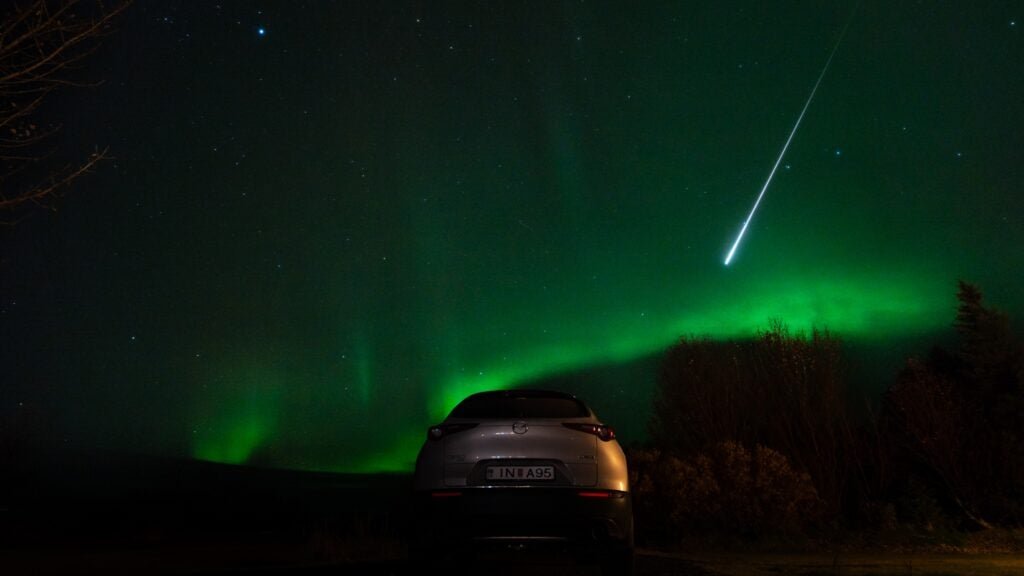
There’s a reason stargazers love the Perseids. The meteor shower can spark up to 100 shooting stars per hour at peak during prime viewing years, with numerous sightings of eye-popping fireballs—the name for especially vivid and colorful meteors that can reach the same luminosity as Venus.
The Perseids, which peak in August, do come with a slight hitch: the 86-percent illuminated moon will hinder the shower’s view. But that’s no reason to skip it. Instead, rethink your Perseid-viewing plan.
Read on for your 2025 strategy to catch the buzzed-about Perseids, along with other interstellar marvels that will join them, from concurrent meteor showers to the year’s best views of the Milky Way.
What’s the Best Time to Watch the Perseid Meteor Shower in 2025?
This year’s Perseids runs from July 17 to August 23 and will peak overnight from August 12 to 13. Typically, it’s best to view a meteor shower during the stretch of highest activity, but that’s not the case this year. The meteor shower crescendos just three days after the full moon. Since lunar light pollution will hide the milder meteors, only the brightest shooting stars and fireballs will be visible.
That’s why many backyard astronomers are switching gears and watching the Perseids off-peak, in the nights and weeks leading up to that August 12 to 13 timeframe. July 29 into 30 is particularly promising, as the moon is only a quarter full, it sets around midnight (right when the Perseids action kicks into gear), and this coincides with other active meteor showers.
Improve Your Perseids View with Other Meteor Showers
While the Perseids won’t produce a flurry of 50 to 100 shooting stars in late July and early August, the timing does provide the chance to watch for four meteor showers in one night, including two that will peak from July 29 to 30.
Here are the four coinciding summer meteor showers, including when to watch, what to look for, and where you’ll see them in the sky (also known as the radiant). I recommend downloading a stargazing app for night-sky navigation.
- Alpha Capricornids: July 3 to August 15
- Peak: July 29 to 30
- Look near: Capricornus constellation low in the southeast sky
- You’ll see: A mild shower with only around five meteors per hour during peak, but the potential for some dramatic fireballs.
- Southern Delta Aquariids: July 18 to August 12
- Peak: July 29 to 30
- Look near: Aquarius constellation low in the southern sky
- You’ll see: Around seven meteors per hour under dark skies. To note: This one’s best viewed in the southern hemisphere and the southern part of the northern hemisphere.
- Perseids: July 17 to August 23
- Peak: Aug 12 to 13
- Look near: Perseus constellation in the northeast sky
- You’ll see: Up to 100 meteors per hour under pristine conditions, although fewer are expected in 2025 due to the bright moon. Watch for fireballs, too.
- Eta Eridanids: July 31 to Aug 19
- Peak: Aug 7 to 8
- Look near: Eridanus constellation low in the southeast sky
- You’ll see: A minor shower with about three fast meteors per hour at peak.
How to Watch a Meteor Shower: Tips and Tricks
Admiring a meteor shower requires a bit of planning, from choosing a strategic viewpoint to pinpointing red flags to avoid.
1. Avoid light pollution.
Just like with aurora hunting, you’ll want to avoid light pollution when chasing meteor showers. The show gets most active and brilliant under inky skies; that’s why I’m planning to watch the sky confetti from an inky lake in New York’s Adirondacks, followed by Quebec’s Mont-Mégantic, the first DarkSky Reserve in the world. Try a resource like this light pollution map to find a dark-sky viewing place close to home.
2. Shield the moon.
If you do choose to pursue the Perseids at peak, use something—your hand, a folder, a blanket—to shield your eyes from the moon. It won’t fix the situation, but it will help you retain your night vision.
3. Use a red-light flashlight.
Speaking of night vision, it’s important to dim your phone (or use this red-screen trick) and either wrap your bright-white flashlight in red cellophane or invest in a red-light lamp. Red light is easier on our eyes at night; after exposure to white beams, or a full-glow smartphone screen, our eyes require around 30 minutes to readjust to the dark.
4. Look for wide-open vistas.
Since the shooting stars could appear all over the sky, it’s wise to choose a lookout point with minimal overhead obstructions. Instead of a thick forest, for example, scout for a hilltop, desert, or field with clear sky views.
5. Consider air quality.
Unfortunately, wildfires have wreaked havoc on the Southwest’s national parks this summer. The correlating smoke is bad for your health, and its haze can obscure your night-sky views. Keep an eye on air quality updates and consider another viewpoint if thick wildfire smoke is in the forecast.
Where to See the Perseids
In most cases, like with the Perseids, the best viewing stretches from around midnight until dawn. That means you’ll be out and about into the wee hours of the morning—unless you strategize your sleep. I aim for campgrounds, glamping sites, and even low-light hotels located within an area with minimal light pollution.
And there are plenty of prime meteor-shower accommodations still available (as of publication) throughout North America, whether you’re heading out for the July 29 to 30 timing, the August 12 to 13 Perseids peak, or both.
1. ULUM Moab, Utah
In late 2023, light pollution authority DarkSky International launched a new program to certify accommodations that protect their pristine nightscapes. ULUM Moab, a glamping getaway set 40 miles south of Arches National Park, is one of the organization’s first DarkSky-certified lodges. This stamp-of-approval means you can catch the night sky marvels, from the Milky Way to the dimmer Perseids, right from camp. Or, watch the wonder nearby at Arches or Canyonlands National Parks. Suites run from $549 per night; for a less-expensive option, try Under Canvas Moab (from $199), another DarkSky-certified glamping location in Moab.
2. Hébergement aux Cinq Sens, Quebec
In 2007, Quebec’s Mont-Mégantic National Park became the world’s first International Dark Sky Reserve, and it’s become one of Canada’s best-known astronomy spots. Hébergement aux Cinq Sens (from $98), a collection of tiny homes and yurts, lies in the heart of this pine-dotted park, which offers dozens of hiking trails for daytime adventure. It’s a great Perseids basecamp, with wide-open gathering spaces from the hotel grounds and quick access to the park’s sky-watching hub, the ASTROLab, just 16 miles away.
3. Hell Creek Campground, Montana
Nabbing a campsite in Glacier National Park may be trying, but out east, Montana’s remote and inky-sky campground options abound. Try Hell Creek Campground (from $37.50 per night), located in a scenic recreational area along angling haven Fort Peck Lake. The property offers dozens of campsites with virtually zero light pollution and wide-open sky views above the still water and distant peaks.
4. Bruneau Dunes State Park, Idaho
Camp in southern Idaho’s Bruneau Dunes State Park, a DarkSky-certified destination with an onsite public observatory and North America’s tallest single-structured sand dune. The park has two main campgrounds with unobstructed celestial views: Broken Wheel and Eagle Cove (from $25). Both have plenty of availability for the mid-August Perseids peak, with the chance to enjoy shooting stars by night and sandboarding under the sun.
5. Buffalo National River, Arkansas
The Buffalo National River draws paddlers with 135 scenic miles of undammed water. Come dusk, this DarkSky Park is also a favorite among astronomy enthusiasts, with pristine nightscapes and plenty of camping options to admire the heavens. Thick oak and hickory forests do make it tough to watch for meteors in some overnight spots, but Tyler Bend Campground (from $20) is a smart option with relatively minimal forest cover and plenty of summer availability.
6. Beaver Island Retreat, Michigan
Last year, State Wildlife Research Area on Beaver Island became Michigan’s first International Dark Sky Sanctuary, and the Lake Michigan getaway has a host of potential sky sights on offer. Pass your pre-shower hours with birding, paddling, or lake snorkeling. When it’s time to catch the show, stay overnight just north of the sanctuary, at glamping hub Beaver Island Retreats (from $249), where guests have ample space to spot shooting stars, fireballs, and, on lucky nights, the northern lights.
Destinations & Things To Do
Why West Virginia is the underrated US adventure capital
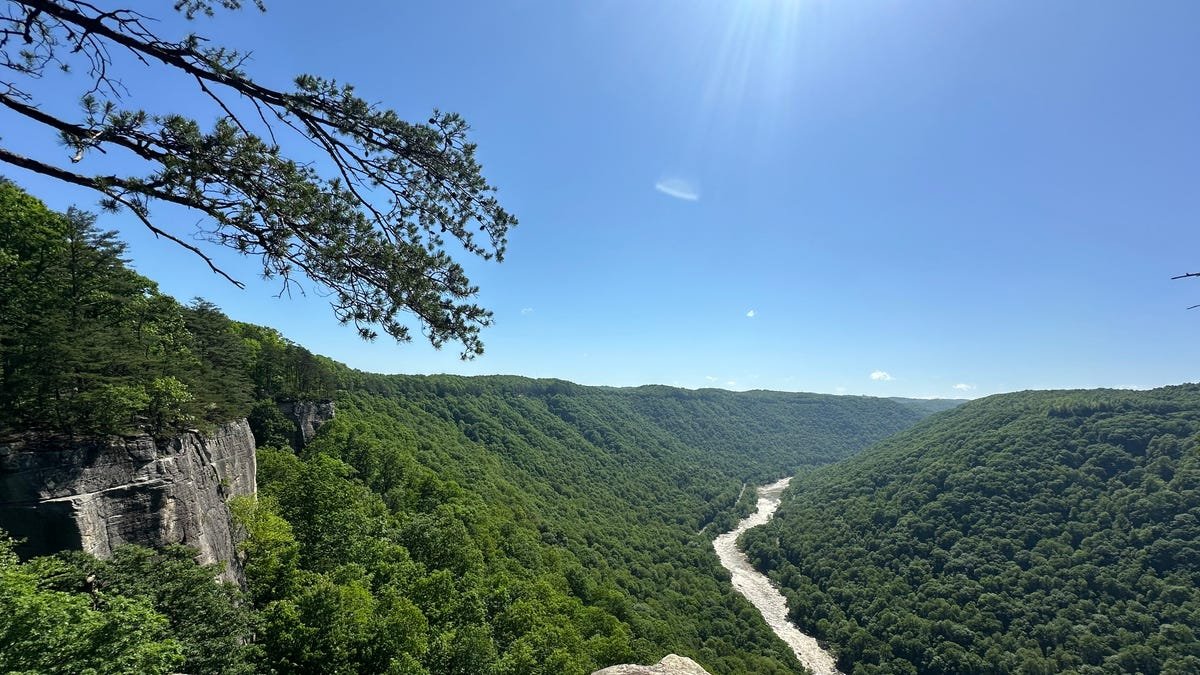
How two border collies help keep planes safe at a West Virginia airport
Meet Hercules and Ned, two border collies keeping West Virginia’s busiest airport safe while spreading smiles.
- West Virginia offers a variety of outdoor activities, including hiking, rock climbing, and whitewater rafting.
- The New River Gorge is a popular destination for outdoor adventures, with trails like the Endless Wall and opportunities for climbing and rafting.
- Charleston, the state capital, serves as an urban hub with access to outdoor recreation areas and a growing food and brewery scene.
“Experience America” is a five-part series that showcases often-overlooked destinations and experiences in our backyard.
FAYETTEVILLE, West Virginia ― If you had told me in January I’d be going to West Virginia twice this year, I don’t think I would have believed you, but I’m so glad I can now say I have been.
West Virginia is an outdoor adventurer’s paradise, and although even locals don’t always take advantage of the resources right on their doorstep, the state is truly a hidden gem of the great outdoors.
“West Virginia is just often an underrated destination as a whole, and maybe not the first thought for a really high adventure destination,” Lindsey Funk, a public relations assistant at the West Virginia Department of Tourism, told me during my first visit, in May. For that, she said, even West Virginians often go elsewhere.
But the Mountain State is trying to remind residents and visitors alike that it’s a great place for any pace of outdoor adventure.
Hiking and nature
Probably the lowest barrier to entry for the outdoor adventure novice is a hike or a nature walk in West Virginia. The state and national parks, almost all of which are free to access, have nearly endless trails and scenic lookouts.
West Virginia is a year-round destination, with breathtaking foliage in the fall and gorgeous vistas the rest of the year, according to Funk.
“In the state as a whole, hiking is probably one of our most family-friendly activities,” she said.
From the Endless Wall trail in the New River Gorge to the West Virginia Waterfall trail – an official guide to the state’s most beautiful water features – there’s something for everyone. Just remember to bring a sturdy pair of shoes.
On a recent personal trip to the New River Gorge and Charleston this spring, I saw firsthand how stunning the scenery along the Endless Wall trail can be. With scenic vistas throughout the gorge, including a unique perspective on the famous bridge, hiking there is relatively low-intensity and well worth the payoff.
The entire trail is just under 5.5 miles out and back, according to AllTrails, but can easily be shortened after taking in some of the views.
High adventure: Climbing and rafting
For those seeking more adrenaline, West Virginia is also a great destination for rock climbing and whitewater rafting, both of which can be found in the New River Gorge.
During the spring trip, I had a chance to raft on the lower New River, with rapids up to Class V, thanks to heavy rain in the days leading up to the excursion.
With swift-moving water, the entire trip took around an hour and a half to two hours to cover about 14 miles, and the rapids were characterized primarily by big, rolling waves.
The guide on the trip, from ACE Whitewater Rafting, said water levels can significantly change the dynamics of the river, which is why it’s important to always travel with a guide. Whitewater rafting is an extreme sport, but guides make it much safer.
There are numerous outfits throughout the New River Gorge that provide guided whitewater rafting excursions.
Novice climbers may also want a guide or a more experienced buddy if they’re checking out the crags.
For rock climbers of all skill levels, West Virginia and the New River Gorge are also almost heaven.
Crags around Fayetteville offer opportunities for outdoor bouldering, top roping, sport and trad climbing for all skill levels. There are also opportunities for deep water soloing at Summersville Lake State Park during the summer.
I took a trip in July to join Queerclimbtastic, an LGBTQ+ rock climbing retreat held every summer in the New River Gorge, and saw firsthand how great the climbing opportunities are in the state. It was my first time climbing outside after years of indoor-only climbing, and I’m already excited to go back next year and explore other crags closer to home in the meantime.
Bike City, USA
Charleston is West Virginia’s urban gateway to the wilderness, about an hour from the New River Gorge. It’s also home to a professional circuit bike race and is trying to grow its presence as a destination for road and mountain biking.
The state’s capital is also a great place to use as a home base for a trip to West Virginia.
“Charleston’s more of a cityscape for us, a smaller city, but this is a great place for downtown shops and events,” Funk said. “But then, just an hour away, is so many acres of public land and those outdoor adventure options.”
Charleston has a budding food and brewery scene, an extensive farmer’s market and is also home to Mountain Stage, a long-running NPR program that broadcasts two hours of performed-live country music nationwide.
Winter sports
Funk said West Virginia is a year-round state and also has a handful of small ski resorts, which are great for beginners interested in trying out the sport.
“We are a four-season destination,” she said.
Jim and Cara Hocking are full-time travel content creators and said they visited Winter Place, one of West Virginia’s ski resorts, earlier this year with their four kids. Only Cara had skied before, and she said it was a great place for the rest of her family to learn.
“It was exactly what we needed, we had someone that was there that taught us the basics, taught our kids the basics,” Jim told me. “It was a perfect place to have your first skiing experience in my mind.”
How to get there and where to stay
The closest airport will depend on exactly where you’re going in the state, but for both of my trips to the New River Gorge, I flew into Charleston, the state capital of West Virginia. From there, it’s about an hour to an hour and a half drive to Fayetteville, which is a significant gateway to the Gorge’s outdoor recreation areas.
Lodging options in and around Fayetteville include campsites, cabin rentals, traditional hotels, B&Bs and more. Options are also available in Charleston for those looking for a more urban base camp for their travels.
Public transit options are limited, so visitors should plan to rent a car to get around.
The reporter on this story received access from West Virginia’s Department of Tourism. USA TODAY maintains editorial control of content.
Zach Wichter is a travel reporter and writes the Cruising Altitude column for USA TODAY. He is based in New York and you can reach him at zwichter@usatoday.com.
Destinations & Things To Do
5 Poses to Relieve Back Pain

Before I became a yoga teacher, I sat at a desk for eight hours a day, five days a week, and commuted an hour each way. I thought I was taking care of myself by practicing yoga after work, but all that sitting still created tremendous pain in my lower back. I tried taking breaks and standing up every hour or so, but it was only when I added desk yoga poses to my everyday routine that I began to experience relief.
The effects of sitting for hours at a time can incur devastating and different impacts on each of us. The following desk yoga stretches provide relief to the various muscle groups that may otherwise become tight and irritated, including the neck, shoulders, hips, and lower back.
5 Yoga Poses You Can Do at Your Desk
You can practice these desk yoga poses all at once or sneak one or two in between meetings and deadlines.
1. Palms Interlaced Overhead
Why it helps: stretches your chest and shoulders
How to do it:
- Sit tall in your desk chair.
- Interlace your fingers in front of your chest and press your palms away from you.
- Keep them interlaced as you reach your arms overhead. (You’ll probably feel some resistance in your shoulders and neck. Try bending your elbows, moving your arms back a little more, and then straightening your arms again.)
- Gaze straight ahead or look toward the ceiling. Stay here for 5-10 breaths.
- Switch the interlacing of your fingers and repeat.
2. Seated Twist
Why it helps: stretches the muscles along the spine
How to do it:
- Sit tall in your desk chair.
- Lift your arms and hold out straight in front of you, keeping them in line with your shoulders.
- Twist to your right.
- Place your left hand on your outer right knee or thigh and rest your right arm either on the chair arm or chair back.
- Press through your heels, breathe in, and sit tall.
- Breathe out and twist your abdomen, chest, and, lastly, your head more toward the right. Stay here for 5-10 breaths.
- Switch sides.
3. Side Bend
Why it helps: stretches the side body from your hips to your armpits
How to do it:
- Sit tall in your desk chair.
- Take your feet slightly wider than your hips and angle your feet outward.
- Place your right forearm on your right thigh, lean to your right, and extend your left arm over your head alongside your left ear.
- Breathe in and lengthen from your left hip to your fingertips as you open the side body.
- Breathe out and begin to turn your chest toward the ceiling. Stay here for 5-10 breaths.
- Switch sides.
4. Ankle Over Knee
Why it helps: stretches your lower back and glutes
How to do it:
- Sit tall in your desk chair.
- Place your right ankle over your left knee in a figure-4 shape.
- Flex your right foot and press through your left heel as you lean your body toward the floor. (Your chest will be over your legs.) Let your neck relax.
- Stay here for 5-10 breaths.
- Switch sides.
5. Forward Fold
Why it helps: stretches the entire back side of the body
How to do it:
- Sit tall in your desk chair. Ensure your legs are wide enough to allow your body to fit comfortably between them.
- Breathe in and lift your chest, breathe out, and lean your chest forward between your legs.
- Bring your hands to the floor, if they reach, and let your neck relax.
- Stay here for 10-20 breaths.
Patrick Franco is a yoga instructor and director at YogaRenew Teacher Training Online. He leads in-person and online teacher trainings worldwide, with a primary focus on yoga sequencing and the business of yoga.
Want more Outside health stories? Sign up for the Bodywork newsletter.
-

 Brand Stories6 days ago
Brand Stories6 days agoBloom Hotels: A Modern Vision of Hospitality Redefining Travel
-

 Brand Stories1 day ago
Brand Stories1 day agoCheQin.ai sets a new standard for hotel booking with its AI capabilities: empowering travellers to bargain, choose the best, and book with clarity.
-

 Destinations & Things To Do7 days ago
Destinations & Things To Do7 days agoUntouched Destinations: Stunning Hidden Gems You Must Visit
-

 AI in Travel7 days ago
AI in Travel7 days agoAI Travel Revolution: Must-Have Guide to the Best Experience
-

 Brand Stories3 weeks ago
Brand Stories3 weeks agoVoice AI Startup ElevenLabs Plans to Add Hubs Around the World
-

 Brand Stories2 weeks ago
Brand Stories2 weeks agoHow Elon Musk’s rogue Grok chatbot became a cautionary AI tale
-

 Destinations & Things To Do1 day ago
Destinations & Things To Do1 day agoThis Hidden Beach in India Glows at Night-But Only in One Secret Season
-

 Asia Travel Pulse3 weeks ago
Asia Travel Pulse3 weeks agoLooking For Adventure In Asia? Here Are 7 Epic Destinations You Need To Experience At Least Once – Zee News
-

 AI in Travel3 weeks ago
AI in Travel3 weeks ago‘Will AI take my job?’ A trip to a Beijing fortune-telling bar to see what lies ahead | China
-

 Brand Stories3 weeks ago
Brand Stories3 weeks agoChatGPT — the last of the great romantics



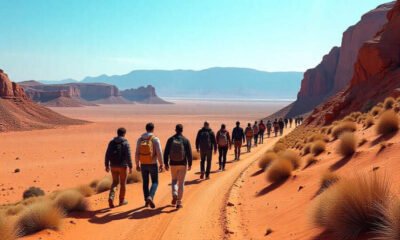

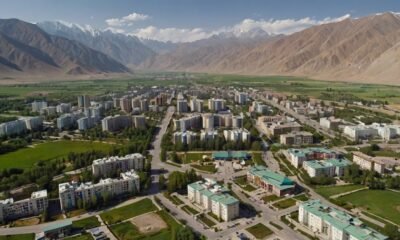







You must be logged in to post a comment Login